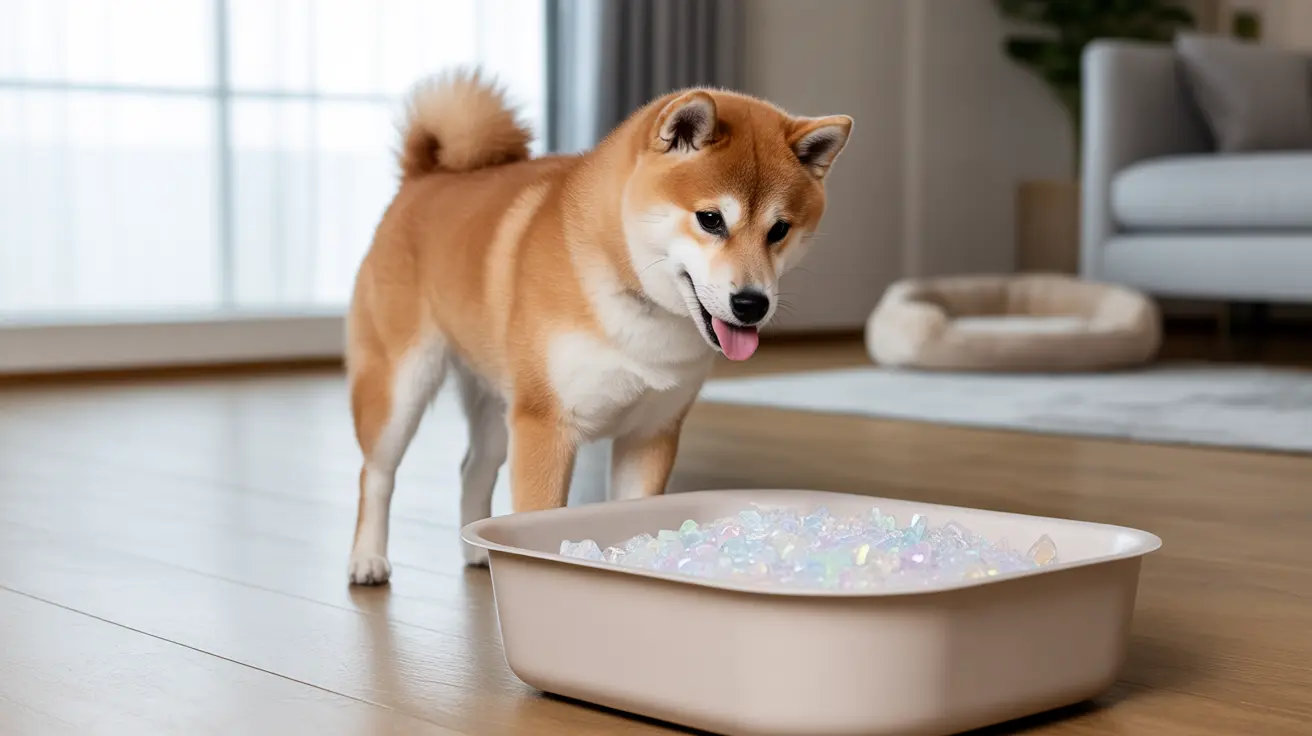Introduction
If your dog ate crystal cat litter, you're likely concerned about potential health risks and wondering what steps to take next. While crystal cat litter is generally non-toxic, ingestion can lead to various complications that require attention. This comprehensive guide will help you understand the risks, identify warning signs, and know exactly how to respond if your dog consumes crystal cat litter.
Understanding the proper response to this situation is crucial for your pet's safety. Crystal cat litter, made primarily from silica gel, can absorb significant amounts of moisture and potentially cause problems in your dog's digestive system, especially if consumed in large quantities.
Understanding Crystal Cat Litter and Its Risks
Crystal cat litter consists mainly of silica gel beads, designed to absorb moisture and control odors in cat litter boxes. While not inherently toxic, these crystals can expand when they come into contact with moisture, potentially causing problems in your dog's digestive system.
- Dehydration due to moisture absorption
- Potential intestinal blockage
- Gastrointestinal irritation
- Risk of toxoplasmosis if contaminated with cat feces
Immediate Steps After Ingestion
- Remove your dog from the litter box area
- Try to determine how much litter was consumed
- Contact your veterinarian for guidance
- Monitor your dog closely for any concerning symptoms
Warning Signs to Watch For
- Vomiting or retching
- Lethargy or unusual behavior
- Loss of appetite
- Constipation or difficulty defecating
- Abdominal pain or bloating
- Signs of dehydration
Treatment Options and Veterinary Care
- Fluid therapy to prevent dehydration
- Medication to help move the litter through the digestive system
- X-rays to check for blockages
- In severe cases, surgical intervention may be necessary
Prevention Strategies
- Place litter boxes in dog-inaccessible areas
- Use covered litter boxes or pet gates
- Clean the litter box regularly
- Provide plenty of mental stimulation for your dog
- Consider alternative litter box locations
Frequently Asked Questions
Is crystal cat litter toxic to dogs if swallowed?
Crystal cat litter is generally non-toxic to dogs. However, while not poisonous, it can cause health issues due to its moisture-absorbing properties and potential for causing blockages, especially if large amounts are consumed.
What symptoms indicate my dog may have eaten too much crystal cat litter?
Key symptoms include vomiting, lethargy, loss of appetite, constipation, abdominal pain or bloating, and signs of dehydration such as dry gums or sunken eyes. If you notice any of these symptoms, contact your veterinarian immediately.
How should I respond if my dog eats crystal cat litter at home?
First, remove your dog from the litter box area and assess how much was consumed. Contact your veterinarian for guidance, and monitor your dog closely for any concerning symptoms. Ensure fresh water is available, but don't force feeding unless advised by your vet.
Can crystal cat litter cause an intestinal blockage in dogs?
Yes, crystal cat litter can cause intestinal blockages, especially if large amounts are consumed. The silica gel crystals can expand when they absorb moisture in the digestive tract, potentially leading to obstruction.
What steps can I take to prevent my dog from eating cat litter?
Prevent access to the litter box by placing it in a dog-proof location, using covered litter boxes or pet gates, maintaining regular cleaning schedules, and providing adequate mental stimulation for your dog to prevent boredom-based behaviors.
Conclusion
While crystal cat litter ingestion isn't usually an emergency, it's important to take appropriate precautions and monitor your dog closely. Understanding the risks and knowing how to respond can help ensure your pet's safety. When in doubt, always consult with your veterinarian, as they can provide the best guidance based on your dog's specific situation.






